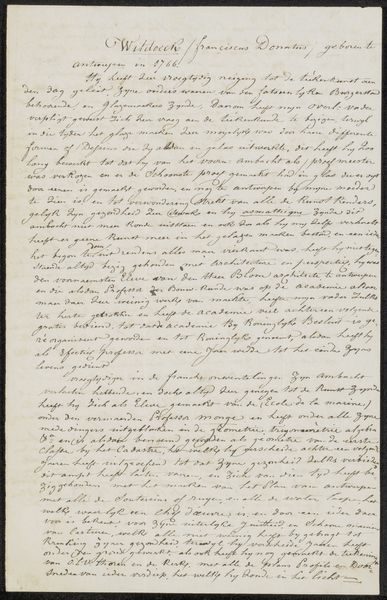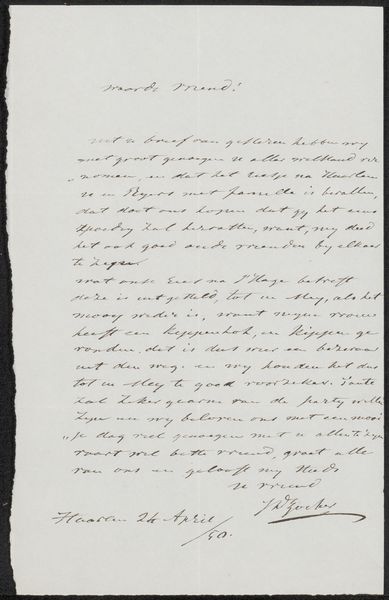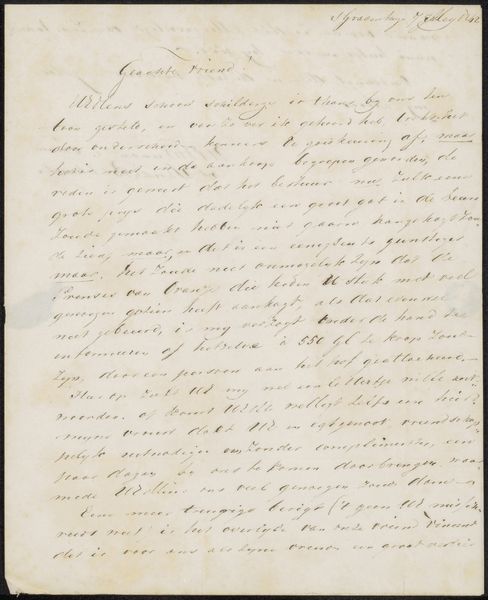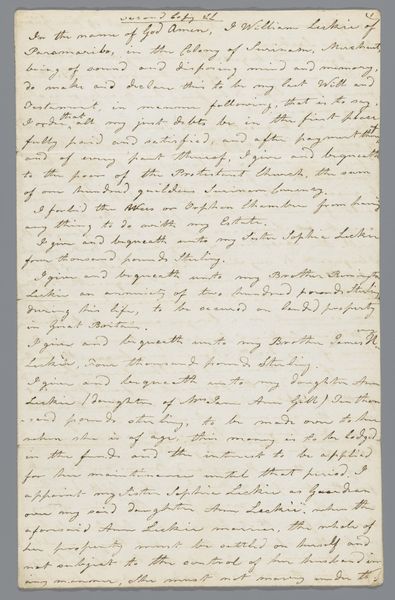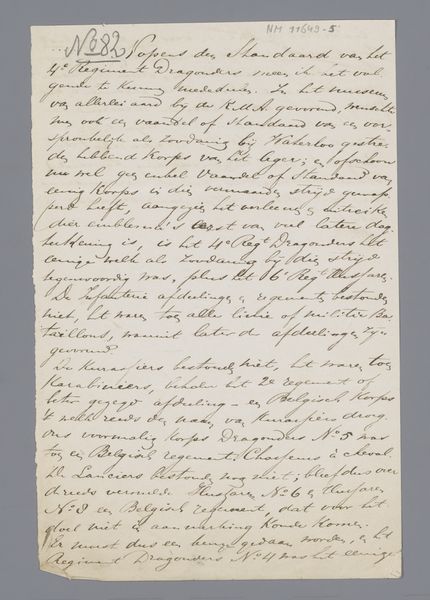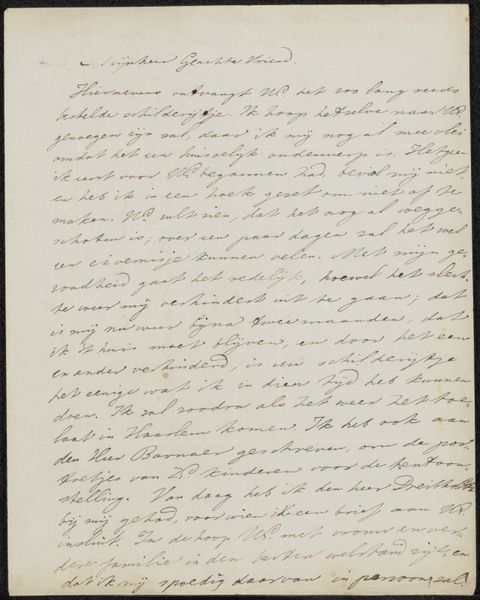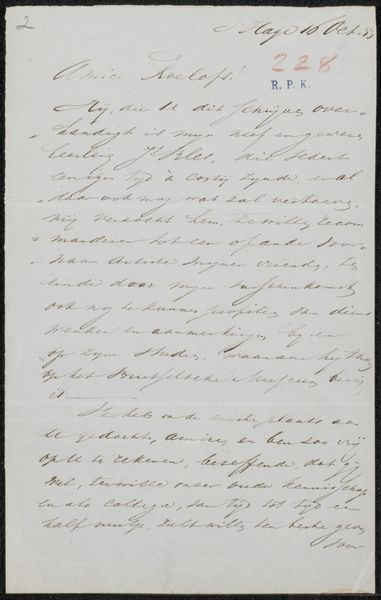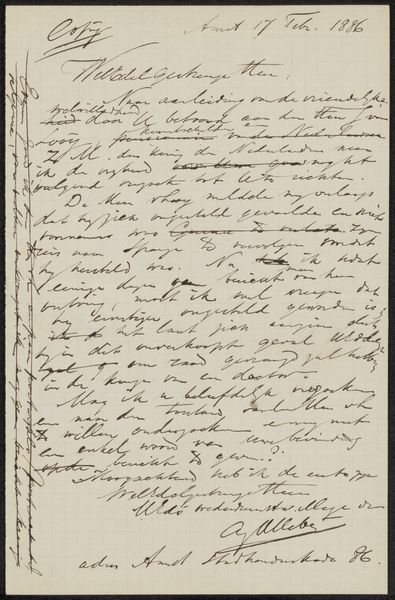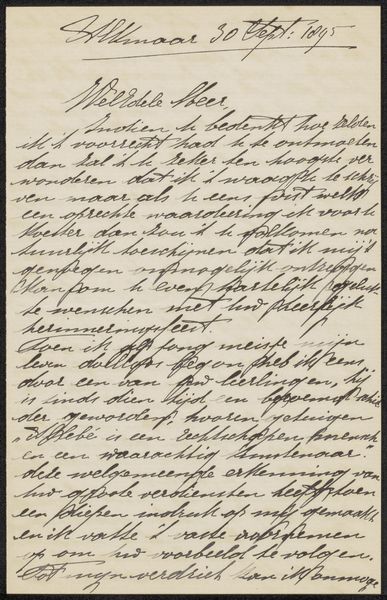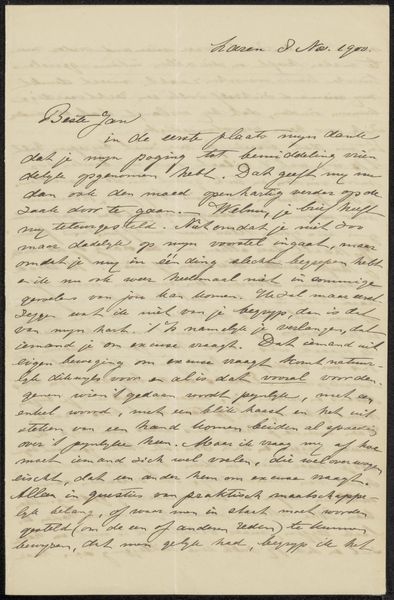
drawing, paper, ink, pen
#
drawing
#
paper
#
ink
#
pen
Copyright: Rijks Museum: Open Domain
Curator: This artwork is titled "Brief aan Jan Veth," potentially from 1886, by Chap van Deventer. It's an ink and pen drawing on paper. It looks quite intimate, doesn't it? All that handwritten script. What stands out to you initially? Editor: The density of the text is striking. It's literally a solid block of words. It feels quite intense, almost like peering into someone's thoughts directly. How do you interpret the significance of such a personal piece, potentially a draft letter, being presented as art? Curator: That’s an excellent question. Consider the period, the late 19th century, a time of burgeoning literary and artistic circles. Van Deventer, by showing us this "Brief," exposes the intellectual milieu he inhabited and the debates occurring within it. What were the social functions of correspondence within those artistic communities, do you think? Editor: I imagine letter-writing as crucial for networking, idea-sharing, and building intellectual alliances. But did simply writing the letter elevate it to artwork status? Curator: Not necessarily. But framing it within the context of Veth, a prominent art critic, suggests a commentary on the art world itself. By preserving and presenting it, Van Deventer may subtly question how correspondence contributes to cultural and intellectual discourse, shaping public opinion and artistic reputation. The materiality of the letter – the ink, the paper – also becomes part of the narrative. What would a carefully composed draft imply? Editor: So, by showing the letter, van Deventer encourages the viewer to consider not just the content, but also the letter’s broader socio-political implications. It reflects on intellectual life as a cultural phenomenon, not just individual genius. Curator: Precisely! We can analyze the letter not merely as a personal communication, but as an artifact deeply embedded in its historical and artistic context, reflecting on the era's social and intellectual life. Editor: I hadn't considered the political and societal elements so directly, focusing instead on its purely textual, private essence. I appreciate your view on it as part of larger institutional dialogues. Thanks.
Comments
No comments
Be the first to comment and join the conversation on the ultimate creative platform.
